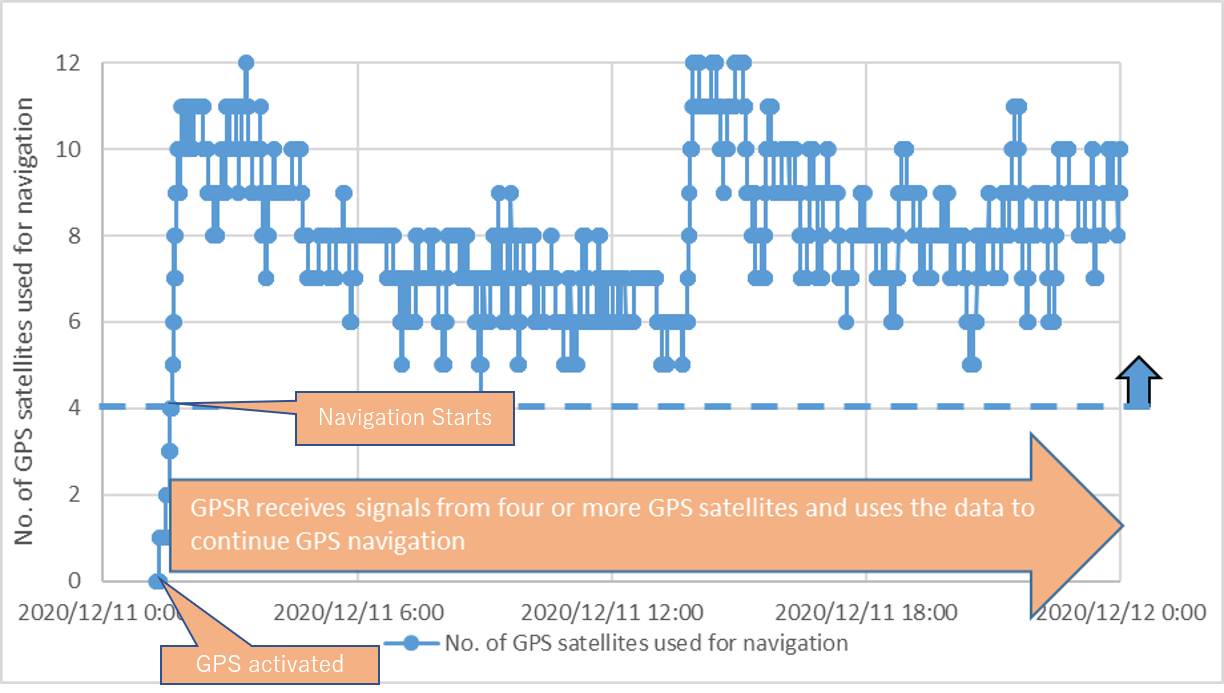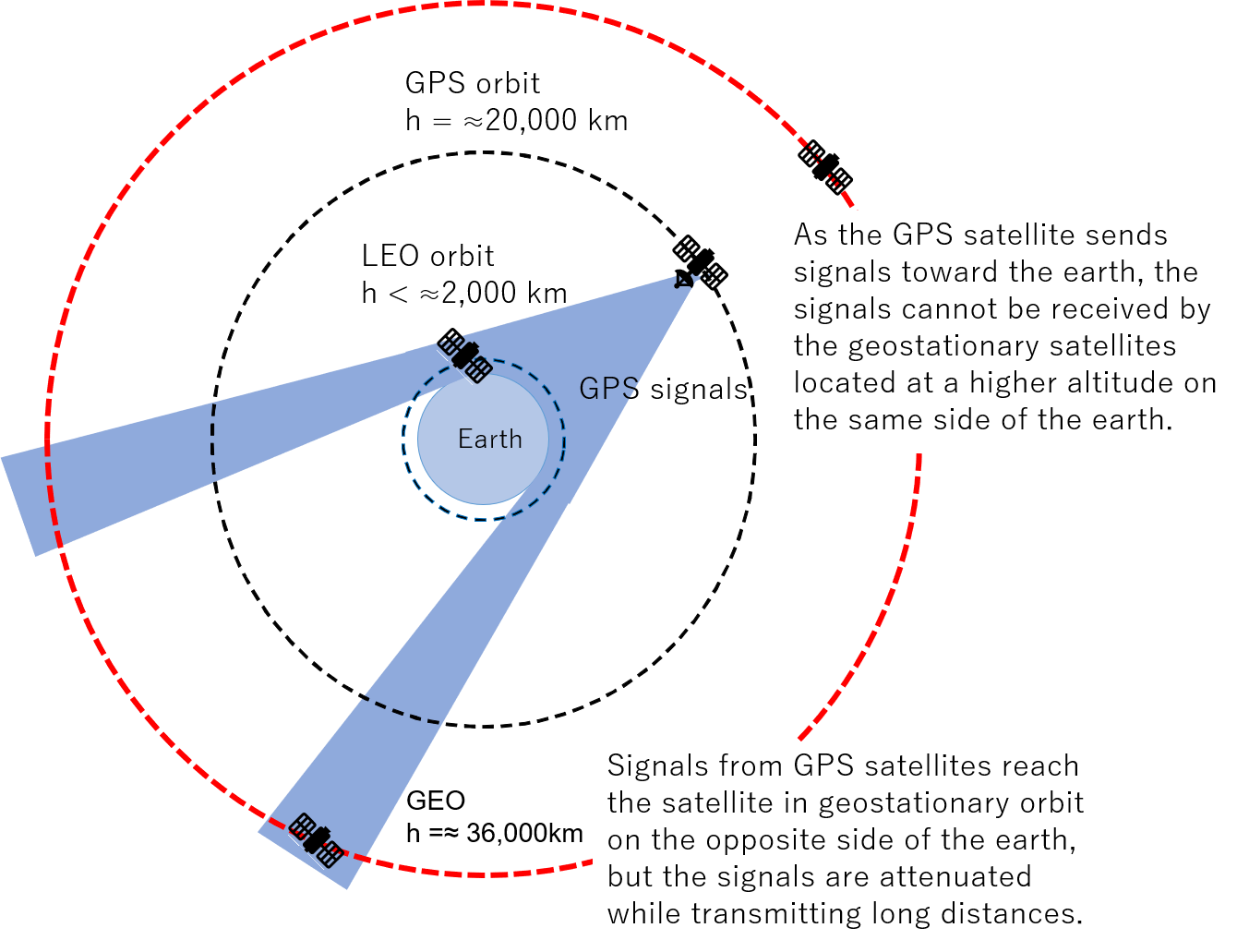JAXA and NEC demonstrate Japan’s First GPS Navigation Technology at Geostationary Orbit
―Using Geostationary Satellite GPSR Aboard Optical Data Relay Satellite―
February 19, 2021 (JST)
National Research & Development Agency
Japan Aerospace Exploration Agency (JAXA)
NEC Corporation
NEC Space Technologies, Ltd.
Japan Aerospace Exploration Agency (JAXA), NEC Corporation (NEC) and NEC Space Technologies, Ltd. (NECSpace) have successfully delivered an on-orbit demonstration of the GPS navigation technology* for geostationary satellites, marking the first accomplishment of its kind in Japan**. The demonstrated technology uses the geostationary satellite GPS receiver (“GPSR”; Figure 1) mounted on the optical data relay satellite launched on November 29, 2020, in order to use signals from GPS satellites to determine the time, position and velocity of satellites in orbit with high precision.
The GPS navigation technology has already been introduced in low-earth-orbit satellites and applied for various purposes, such as highly precise orbit determination, refinement of time reference for satellite systems, and autonomous orbit control for increased operational efficiency, thereby helping improve satellite performance. However, this technology was previously difficult to apply to geostationary orbit satellites. Geostationary satellites are located at a higher altitude (36,000 km) than GPS satellites. Since GPS satellites only send signals in the direction of the earth, their signals travel long distances to reach the geostationary orbit on the opposite side of the earth (reference image), but they are attenuated and too weak to receive reliably by satellites on the geostationary orbit.
The GPSR is equipped with technologies developed jointly by JAXA and NEC to enable acquiring, tracking, and decoding of GPS signals, even weak ones. It has been confirmed that the new GPSR is capable of enabling geostationary orbiters to receive GPS signals from four or more GPS satellites and continue running the GPS navigation process in a stable manner (Figure 2). This capability will contribute to significantly improving the performance of geostationary satellites in a number of ways, including increased operational efficiency through autonomous navigation and orbit control, raised geometric correction accuracy of satellite imagery, and refined time reference for satellite systems.
Based on the above achievements, NECSpace will commercialize the GPSR system (development, manufacturing, distribution), and is planning to start sales from the spring of 2021 inside and outside of Japan. NECSpace has abundant experience as a satellite component manufacturer, and has delivered numerous satellite communication payloads around the world. This activity aims to facilitate usage of the GPS navigation technology for geostationary orbiters, which will enhance the spacecraft’s functionality.
JAXA and NEC are continuing with related activities to improve the GPSR. One specific plan is to mount the improved GPSR on the Engineering Test Satellite -9 (currently under development, scheduled for launch in fiscal 2023) so that it will be used for an on-orbit demonstration of autonomous orbit control.
* GPS navigation technology uses GPS signals from GPS satellites to calculate the distance between the GPSR and multiple GPS satellites based on the time difference of arrival at the GPSR. This is done in order to determine the time, position and velocity of the GPSR with high precision. For the technology to function, in principle, the GPSR needs to receive signals from at least four GPS satellites. GPS has been developed basically for use on the earth surface, but GPS signals travel long distances into outer space where GPS navigation is possible by receiving the signals.
Figure 1: Flight models of GPSR mounted on the optical data relay satellite
(from left: GPSR antenna; low noise amplifier; signal processing unit) ©JAXA

Figure 2: Navigation status and number of GPS satellites used for navigation of GPSR mounted
on the optical data relay satellite
©JAXA

Reference image: GPSR in geostationary orbit receiving GPS signals
©JAXA

**According to JAXA and NEC research as of February 19, 2021
Related Links
- Toward more competitive telecommunications satellites in the all-electric satellite age
- Satellite Navigator, Space Technology Directorate I, JAXA | LUCAS(Japanese Only)
- Satellite Navigator, Space Technology Directorate I, JAXA Engineering Test Satelite-9(Japanese Only)
- NEC | Space solution(Japanese Only) External Link
- GPS Receiver (GPSR)(Japanese Only) External Link